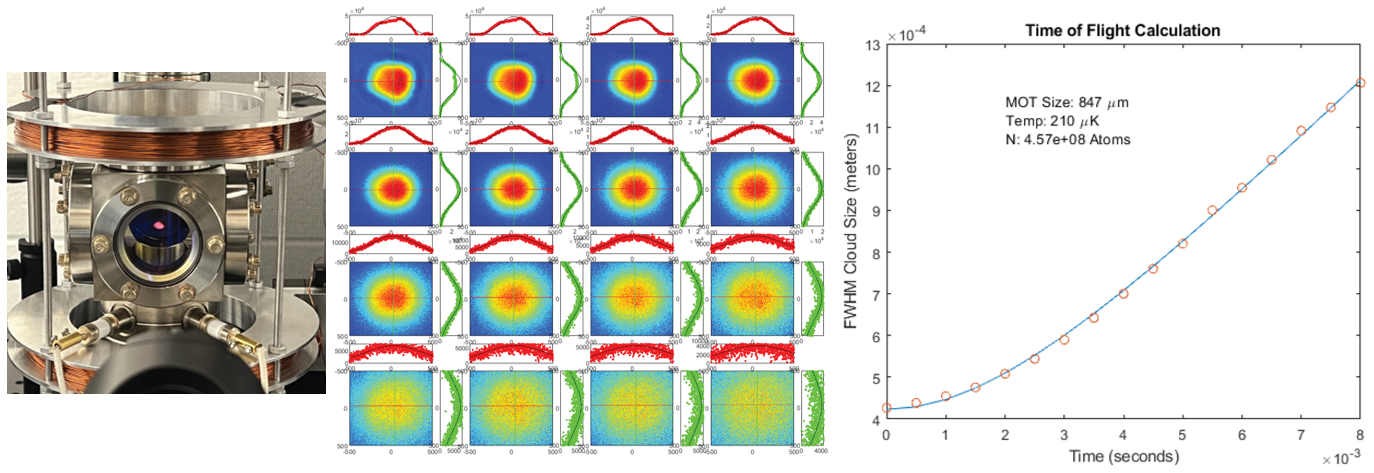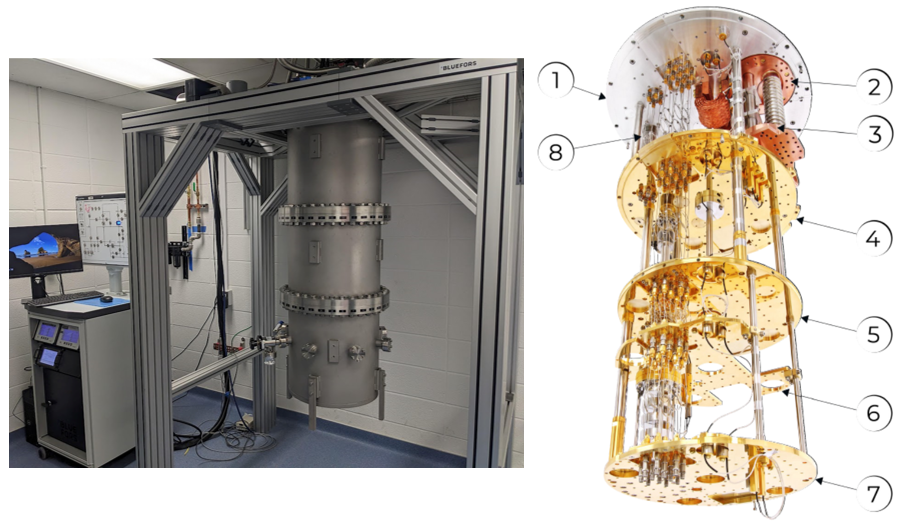Quantum Frequency Transduction
In collaboration with the Instrumentation Division of the Brookhaven National Laboratory, we aim to build the infrastructure needed to interconnect superconductive (SC) quantum circuits and atomic transduction systems towards interconnecting distant Quantum Processing Units (QPUs). This long-term goal is the next big step towards connecting Noisy Intermediate Scale Quantum (NISQ) quantum circuits into larger quantum networks.
Superconductive-based circuitry is one of the promising technologies for developing QPUs, and it is used by a large number of private companies working towards quantum computing, such as IBM, Google, and Microsoft. Quantum networking, on the other hand, requires quantum memories to collect and store entanglement from photonic states, and then to release it on demand for transferring it to other matter systems. Atomic-based memories are a well-developed technology for such purposes. We are developing an interconnect between the clock states of Rubidium (Rb) atomic systems and SC Radio-Frequency (RF) cavities at cryogenic temperatures. This scientific milestone is the main challenge today towards the frequency transduction needed to connect distant SC circuits with atomic-based quantum memories in a quantum network. We aim to demonstrate Rabi (coherent) oscillations in a laser-cooled cloud of 87Rb atoms driven by the resonant AC magnetic field in superconducting cavities.
We have developed a so-called Magneto-Optical Trap (MOT) of 87Rb atoms in the QIST lab in BNL, where atoms initially at room temperature in a UHV chamber are slowed down to a temperature of ~210 μK, and about one billion of them are trapped using magnetic field gradients. The final cold cloud is about ~847 μm in size.

(Left) Laser-cooled 87Rb atoms fluorescing in a UHV chamber. Red-detuned laser beams (not shown) and two anti-Helmholtz coils are used to slow down and trap atoms in a small region about ~0.85 mm in diameter (red). (Center) Cooling laser beams and trapping fields are turned off, leaving the atom cloud free to expand. Size of the atomic cloud is measured after release for time intervals of 500 us up to 7.5 ms. (Right) Cloud size as a function of time, allowing us to estimate its temperature and the total number of atoms in the cloud.
The BNL QIST laboratory recently acquired and installed a custom-designed dilution refrigerator capable of housing optics, SC circuits, and atomic systems to temperatures down to ~10 mK. The system is divided into a series of flanges, each at a lower temperature (see Below). One of the flanges is kept at ~4K using a standard liquid helium cooling process, and then the dilution refrigerator uses the heat of mixing of the two isotopes, He-3 and He-4, to generate further cooling. Dilution of these two isotopes splits into two phases at temperatures below 0.8 K. Energy is taken from the environment to move He-3 atoms from the concentrated phase to the dilute phase when temperature of the mixture decreases.

(Left) Customized cryostat hanging from its supporting frame, and the control station at the QIST laboratory. The gas handling and cryocooler systems (not shown) are housed in a separate room for heat and sound dissipation. (Right) Schematic of the cryostat insert layout. 1: 50K flange, 2(3): Pulse tube first (second) stage cold head, 4: 4K flange, 5: Still flange (~900mK), 6: Cold plate, 7: Mixing Chamber flange (~10mK).
We are designing a hybrid system where laser-cooled atoms in UHV can be transferred inside of SC cavities at cryogenic temperatures. The cavity will be driven using a ~6.835 GHz RF signal, where the resonant magnetic field will coherently couple with the atoms via a Four Wave Mixing protocol. The strong control field C2 creates an Electromagnetically Induced Transparency (EIT) condition for photons in the hyperfine ground states manifold. If one photon is loaded into the cavity mode (g1), the atom would make a full oscillation up to the excited state F’=1 and back thanks to the presence of the two control fields, C1 and C2. The microwave photon would be absorbed and a photon in the mode g2 -resonant to the quantum memories in the QIST lab- would be created, finalizing the transduction protocol. The interaction strength is enhanced by a factor of a square root of N thanks to the collective coupling of all N atoms in a single atomic spin wave.
